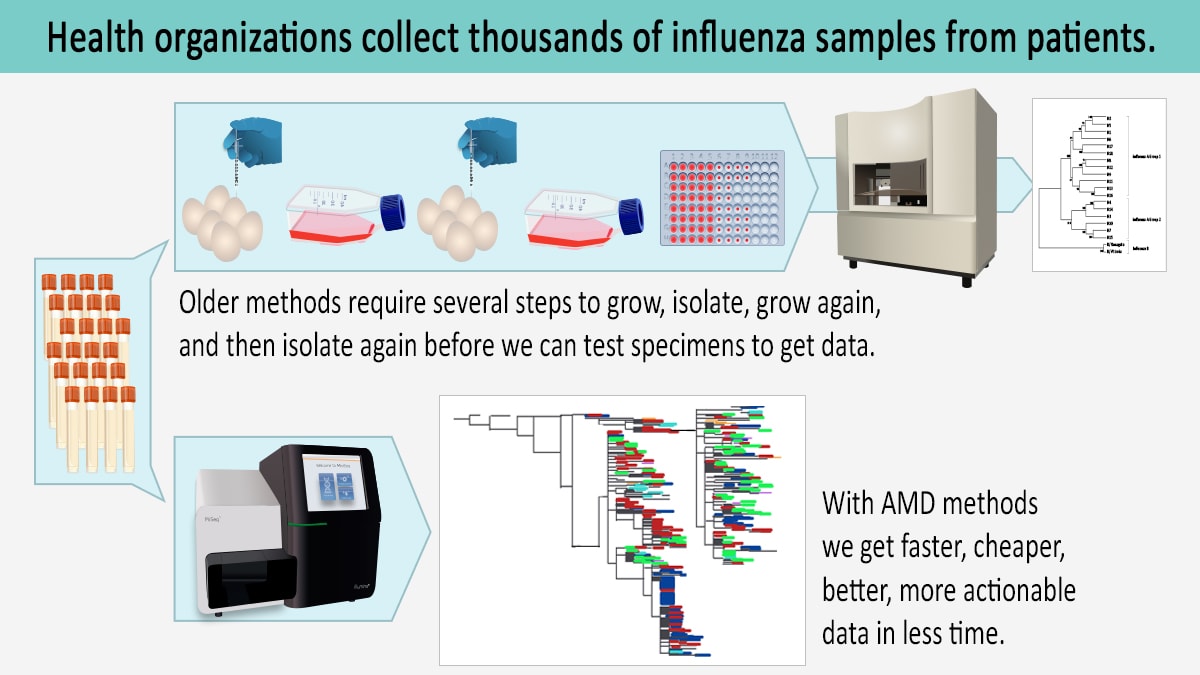What to know
Vaccines helped eliminate many diseases in the United States, such as polio, while other vaccine-preventable diseases like pertussis (whooping cough) are rebounding. Using AMD technology, CDC scientists discover shifts in the DNA of circulating bacteria and viruses. With that information, they work to develop more effective vaccines to address the changing microbes.

Finding DNA shifts in pertussis
Despite the availability of vaccines against pertussis (whooping cough), the disease has rebounded. In each year since 2010, between 10,000 and 50,000 cases are reported in the United States.
Using AMD technology, CDC scientists found shifts in the DNA of circulating Bordetella pertussis bacteria. Those shifts in DNA could be contributing to the resurgence of pertussis.
Current vaccines target a particular bacterial component, Pertactin, a protein believed to help bacteria attach to cells in the throat. However, researchers confirmed the types of B. pertussis causing the most illness in the United States are missing pertactin.
Using AMD methods, investigators are mapping the complete genome of both historical and currently circulating strains of B. pertussis. They hope to determine if these genetic changes are contributing to the reemergence of pertussis.

Improving influenza vaccines
Developing the annual flu shot is a year-round process that involves:
- monitoring and characterizing circulating flu viruses;
- selecting which viruses should be included in the upcoming season's vaccine by global influenza experts;
- producing and growing candidate vaccine viruses used in manufacturing; and
- manufacturing the vaccines in time for flu season.
With AMD, the characterization of flu viruses has been greatly enhanced, providing experts with more data to support vaccine decisions.
Better flu surveillance

Using older methods, specimens must be grown in culture to create a virus isolate before the specimen can be sequenced. With AMD, the specimens can be sequenced directly, without the need to first grow them in culture. AMD technology is reducing the response time to flu outbreaks, resulting in better, cheaper data in less time.
